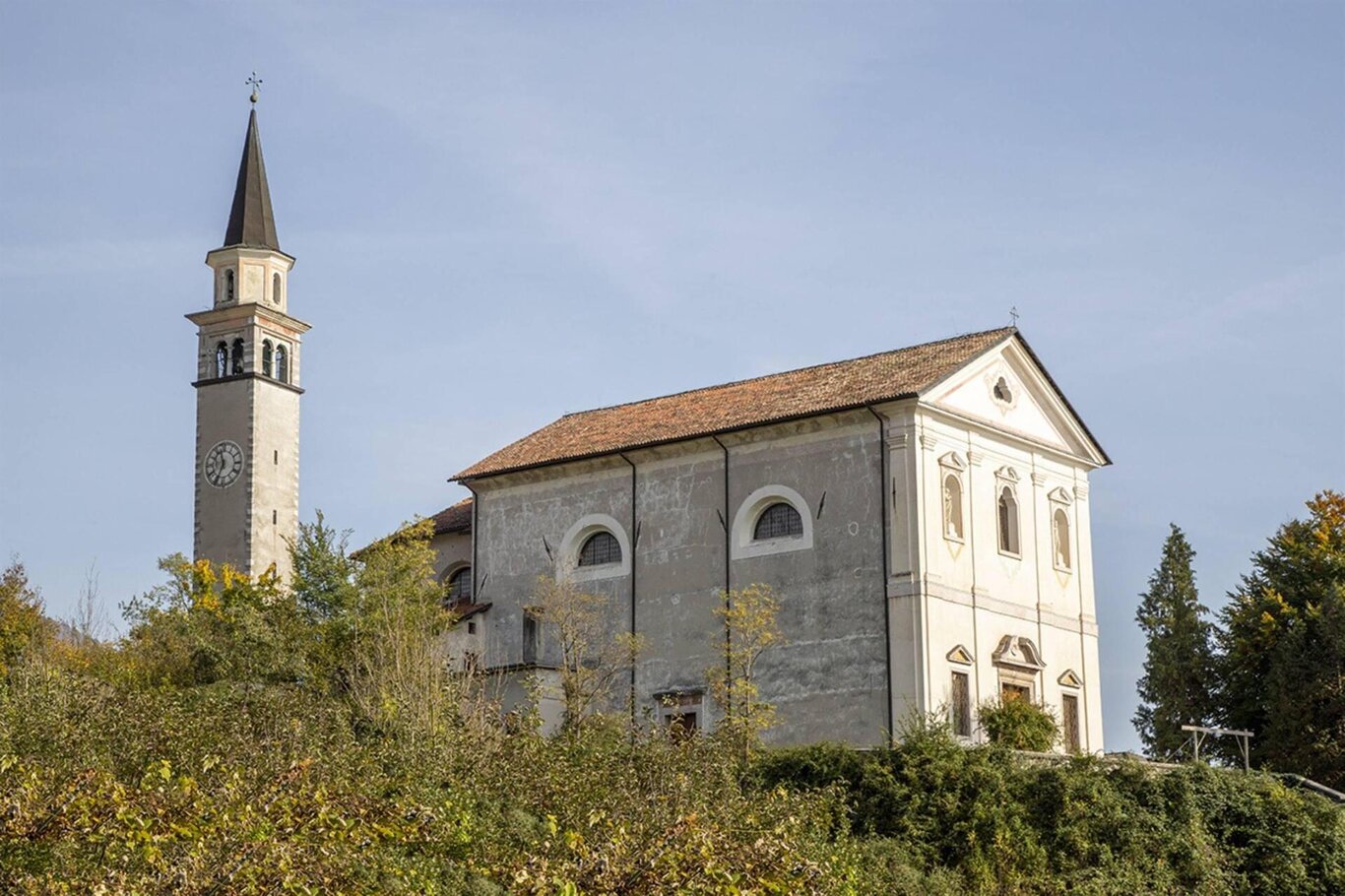Im Laufe der Jahrhunderte finden sich zahlreiche Hinweise auf die Kapelle von Pedavena, eine der sechs, die direkt von der Kathedrale von Feltre abhängen, in den bischöflichen Dokumenten, die die Visitationen zu den verschiedenen Kirchen des Gebiets beschreiben.
So erwähnt der Bischof Rovellio im Jahr 1587 das Hauptaltarbild, das von einem jungen Francesco Frigimelica geschaffen wurde, einem der wenigen heute noch erhaltenen Elemente der alten Kirche, die ab der Mitte des 18. Jahrhunderts nach einem Entwurf von Antonio De Boni neu erbaut wurde und am 18. September 1768 geweiht wurde.
Architektur
Die Kirche wurde ab der Mitte des 18. Jahrhunderts vom aufstrebenden feltresischen Architekten Antonio De Boni, Schüler von Francesco Maria Preti und Planer der Kirchen von Villabruna und Quero, neu erbaut.
Das Langhaus präsentiert sich weit und hell mit vier Seitenaltären; die dekorativen Elemente, wie die Stuckarbeiten, verweisen weiterhin auf Rokoko-Modelle, während die Raumaufteilung bereits dem neugeborenen neoklassizistischen Stil zuwendet, wie man beispielsweise an den Kapitellen sieht, die das Gesims stützen und die Seitenschiffe rahmen.
Kunstwerke
Der Hauptaltar birgt das Gemälde der Geburt, das am Ende des 16. Jahrhunderts von einem jungen Francesco Frigimelica, einem bellunesischen Maler, geschaffen wurde, der viele Zeugnisse seiner Kunst in den Kirchen des bellunesischen Gebiets hinterlassen hat. An den Wänden des Presbyteriums hängt links ein kleines Bild, das den Tod des heiligen Josef darstellt und im 18. Jahrhundert von einem anonymen Künstler gemalt wurde, während rechts eine sakrale Konversation des 17. Jahrhunderts mit sechs Heiligen, die die zentrale Figur der Madonna umgeben, bewundert werden kann.
Die Apsis wird von einem imposanten Baldachin dominiert, der eine Darstellung der Dreifaltigkeit von Sebastiano De Boni, dem Sohn des Architekten Antonio, enthält, der das Gebäude entworfen hat. Ein Gemälde von Antonio Crico aus der zweiten Hälfte des 19. Jahrhunderts mit der Madonna mit dem Kind, dem heiligen Antonius von Padua und dem heiligen Karl Borromäus dekoriert die linke Wand des Langhauses, während sich gegenüber eine Kreuzabnahme befindet, die dem veronesischen Maler Antonio Balestra zugeschrieben wird.
